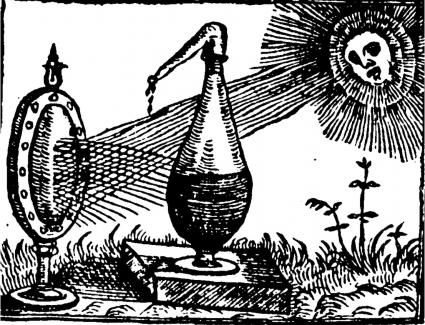2018: ALI as Distillery

February 12, 2018
We’re in a distillation process at ALI.
Distillation separates elements that have been mixed together, whether solids from liquids (removing minerals from water) to create something more pure, or dillutants from source material (removing excess water from fermented blue agave) to create something more potent. Whether you’re after the purest water or the most refined tequila, distillation requires applying intensive energy and facilitating a state change (liquid to gas and back again), before it can yield the hoped-for results.
We’re not that interested in attaining purity at ALI, nor are we in the business of producing tequila (sadly), but we are interested in clarity and essentials, and we are unafraid of state change.
To some of the essential questions that have driven us since we started this work 20 years ago—questions that have been seeded, tended, gathered, and fermented in a variety of fruitful settings—we are adding new forms of energy and producing new forms of output.
One question has had a lot of our attention recently. How can we provide the data planning and design professionals need to do their best work, rapidly, to replenish aquifers and harvest every precious drop of run-off in an increasingly variable climate? Working into that question has led us away from the classroom, and requires a sustained technical focus. That work is moving forward as Divining Lab LLC, building high-precision hydrologic modeling and decision-support tools for communities investing in green infrastructures. Divining Lab LLC is located at the LA Cleantech Incubator, where it benefits from the intense creative energies of collaborators in the water, energy, tech, and built environment sectors.
Another essential question that has driven our work over the years is less technical, more rooted in the the arts and humanities. How can the world’s rich history of water architectures in drylands inform contemporary design? That question, too, requires a new kind of attention from us. Sifting lessons drawn from classrooms, fieldwork, and new research, we are creating a set of digital and print resources for students and teachers. In short, we're writing. That distillation work takes place in the intense, if more contemplative, laboratory of libraries, and wherever the pursuit of global case studies may lead us. Periodic installments of that work will appear on ALI’s website.
Both batches of work hold the promise of new tools—some hard, some soft; some data-driven, some culture-driven—for inspired climate adaptation. We look forward to sharing the results of our distillation process with you.
Hadley and Peter
Recent posts
February 15, 2018
February 12, 2018
February 12, 2018
Archives
- July 2020 (1)
- February 2018 (4)
- August 2016 (1)
- July 2016 (3)
- April 2016 (1)

